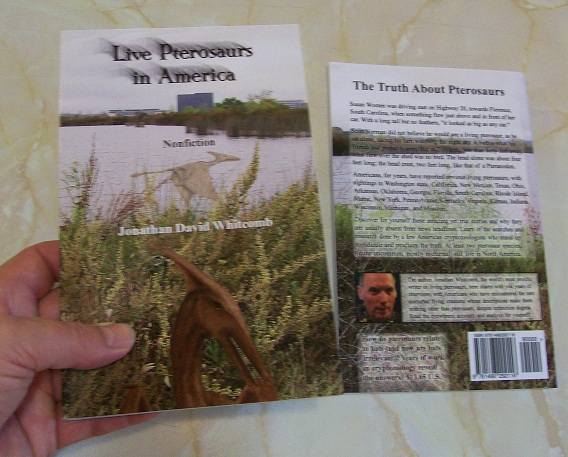It seems that no state of the USA is immune from flying creatures whose descriptions make them nothing other than modern living pterosaurs. Some states seem to have more than their share, including California and Texas (two of the largest in land and human population). Pennsylvania now has several sightings, with the most recent report involving a night-flying, glowing pterosaur.
Another Pterosaur Sighting in Pennsylvania
Afterwards she did some research and told me, “I have found that a pterosaur is identical to what we saw.” She has not yet told me any details about her research nor what image she may have seen that looked like what was encountered; but it is sufficient to consider that it was a possible American ropen. The sighting was in Pennsylvania, and I believe it involved bioluminescence.
In 2006 myself and two of my students were standing outside of my karate school. My school was located on route 119 . . . In Southwest Greensburg [Pennsylvania] . . . I noticed a large black bird in the sky. . . . I observed it for about two minutes as it flew towards us very slowly . . . . [It] landed in the water behind the school. . . . We could here it splashing around, and Carrie ran around the building to see it. There are always ducks in that water as well as rats and other things. When she came back, . . . Carrie said it was in the water splashing and eating or grabbing something in its mouth.
On page 55 of the third edition of the nonfiction cryptozoology book Live Pterosaurs in America, an eyewitness describes her encounter with a “giant pterodactyl” in Philadelphia, Pennsylvania:
It was several years ago . . . approximately 5:00 A.M. . . . The weird part is I live in Philly. [My friend] was dropping me off, and parked. . . . . . about six blocks away . . . we saw something that made our jaws drop. . . . This thing didn’t seem to fly quickly. [Its] wingspan was huge. We’d figured at least 20 feet or so. It wasn’t flapping real hard like a sparrow or pigeon does. It almost seemed to sail.
______________________________________________________________________
From the Acknowledgements in the nonfiction cryptozoology book Live Pterosaurs in America, concerning the American World War II veteran Duane Hodgkinson:
Alongside countless other American veterans of World War II, who risked their lives to preserve our freedom, he faced the threat of death in a faraway land. But his bravery in reporting a giant living “pterodactyl” gave us another freedom, even the freedom to believe in a life thought to have been long extinct—featherless flying creatures unlike any bat, some of them gigantic, both faraway and here in America: live pterosaurs.



